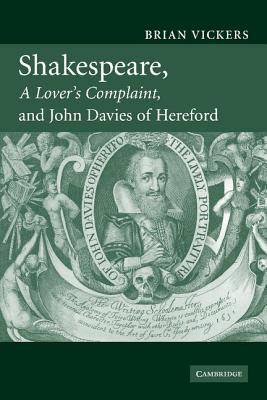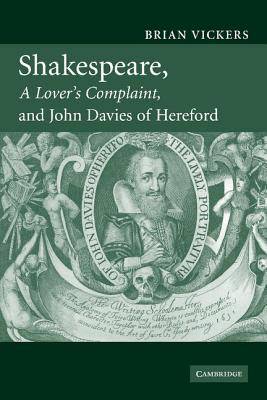
- Afhalen na 1 uur in een winkel met voorraad
- Gratis thuislevering in België vanaf € 30
- Ruim aanbod met 7 miljoen producten
- Afhalen na 1 uur in een winkel met voorraad
- Gratis thuislevering in België vanaf € 30
- Ruim aanbod met 7 miljoen producten
Zoeken
€ 60,95
+ 121 punten
Uitvoering
Omschrijving
When Shakespeare's Sonnets were published in 1609 a poem called A Lover's Complaint was included by the publisher, Thomas Thorpe, who was notorious for several irregular publications. Many scholars have doubted its authenticity, but recent editions of the Sonnets have accepted it as Shakespeare's work. Now Vickers, in this text, the first full study of the poem, shows it to be un-Shakespearian both in its language and in its attitude to women. It is awkwardly constructed and uses archaic Spenserian diction, including many unusual words that never occur in Shakespeare. It frequently repeats stock phrases and rhymes, distorts normal word order far more often and more clumsily than Shakespeare did, while its attitude to female frailty is moralizing and misogynistic. By close analysis Vickers attributes the poem to John Davies of Hereford (1565-1618), a famous calligrapher and writing-master who was also a prolific poet. Vickers' book will re-define the Shakespeare canon.
Specificaties
Betrokkenen
- Auteur(s):
- Uitgeverij:
Inhoud
- Aantal bladzijden:
- 342
- Taal:
- Engels
Eigenschappen
- Productcode (EAN):
- 9780521349611
- Verschijningsdatum:
- 14/07/2011
- Uitvoering:
- Paperback
- Formaat:
- Trade paperback (VS)
- Afmetingen:
- 152 mm x 229 mm
- Gewicht:
- 453 g

Alleen bij Standaard Boekhandel
+ 121 punten op je klantenkaart van Standaard Boekhandel
Beoordelingen
We publiceren alleen reviews die voldoen aan de voorwaarden voor reviews. Bekijk onze voorwaarden voor reviews.











